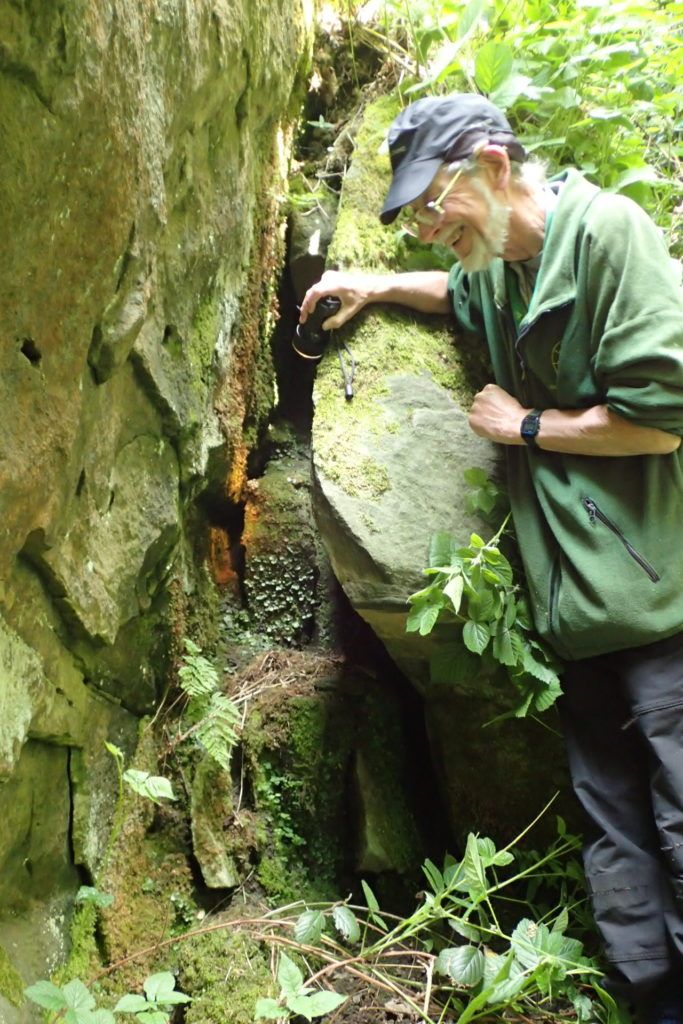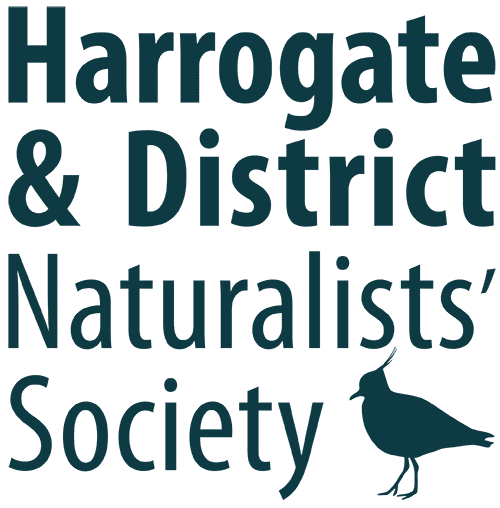This woodland is owned and managed by Bradford MDC and comprises Coppy, Stubham, Hudson and Middleton Wood itself. It is situated very close to gardens and a swimming pool and yet seems to maintain its peace and tranquillity. Happily we were blessed with a warm and sunny day for our expedition.
Our visit was led by Bruce Brown, botanical recorder for Wharfedale Naturalists, who surprised us right at the start with an unexpected species of a Barberry shrub Berberis vulgaris, with its yellow flowers growing in drooping spikes. This plant was much destroyed in 19th century, as it is a secondary host of wheat rust. It was the first time that many of us had seen it.
Bruce then began skirting around the outside of the wood, and noting all the plants growing there, which included an enormous amount of Great Horsetail Equisetum telmateia and Creeping Buttercup Ranunculus repens. Both these were making good headway in their takeover bids. We also noted the various Apiaceae species and discussed their differences.
Once inside the wood, we looked at the tree canopy which supported numerous species including Sycamore Acer pseudoplatanus, Wych Elm Ulmus glabra, Pedunculate Oak Quercus robur, Sessile Oak Quercus petraea, Rowan Sorbus aucuparia and many more. Shrubs included Holly Ilex aquifolium, Hazel Corylus avellana and abundant Hawthorn Crataegus monogyna which was flowering at its very best.
Unfortunately we had missed the bluebells. Although they were covering the woodland floor, their flowering period was over. Likewise the celandines, which comprised mostly yellowing leaves. However, before very long we were shown the American Large-leaved Avens Geum macrophyllum. This plant has larger leaves and seed heads than our common Wood Avens Geum urbanum (which was also present). The two species can form a hybrid which is completely sterile. Another American plant which we found close to the streams was Fringecups Tellima grandiflora.
We spotted one individual Goldilocks Buttercup Ranunculus auricomus which had almost finished flowering. (Those familiar with this species will be aware that it has a party trick of ‘missing petals’ in any case.) Examples of other ground flora included Creeping Soft-grass Holcus mollis, Wood-sorrel Oxalis acetosella, Greater Stitchwort Stellaria holostea, Wood Anemone Anemone nemerosa, Wood Melick Melica uniflora, Wood Forget-me-not Myosotis sylvatica, Yellow Pimpernel Lysimachia nemorum and Raspberry Rubus idaeus.
Being in woodland, naturally we were treated to a whole host of ferns, sedges and rushes so it is difficult to know where to start. We found numerous ferns including Soft Shield fern Polystichum setiferum, Broad Buckler fern Dryopteris dilatata, Male fern Dryopteris filix-mas and Scaly Male fern Dryopteris affinis. However our fern highlight was the gametophyte form of the Killarney Fern Trichomanes speciosum which as you might expect was hiding itself away in a rock crevice. There was very little space to view this gametophyte, so we climbed up one by one to the spot, with Bruce very patiently waiting. The Killarney Fern in its sporophyte form which bears the fronds is now very rare indeed and not many of us have been lucky enough to see it.
Of the sedges we found, the Thin-spiked Wood Sedge Carex strigosa has to be worthy of mention as it grows in only a few places in Yorkshire. This sedge can be easily overlooked, and new records have been made since the 1980s. It was rediscovered in Scotland in 2016. It has much broader leaves than Wood Sedge Carex sylvatica and differs in the shape of its fruits.
Needless to say we found a lovely, sunny area for lunch and then proceeded into another part of the wood with some different trees including European Larch Larix decidua and Grey Poplar Populus x canescens. The Grey Poplar is a hybrid between the White Poplar and the Aspen.
Towards the end of our expedition, we were rewarded with another treat – Spurge-laurel Daphne laureola. This is an evergreen shrub which has green flowers, grows to 1m in height and looks similar to a rhododendron. Again this seemed to be a species new to several of us.
Many thanks to our leader, Bruce Brown, for providing such a fascinating day of woodland trees, shrubs and ground flora. There was so much for us to see and learn in the area in one day, and I keep reminding myself how lucky I am to be a part of HDNS. (A full species list is attached.)
Sonia Starbuck
References: The Wild Flower Key, Francis Rose
Grasses, Sedges, Rushes and Ferns, Francis Rose
Designated Site Citation, Bradford MDC. Location North of Ilkley
Plant Atlas 2020


